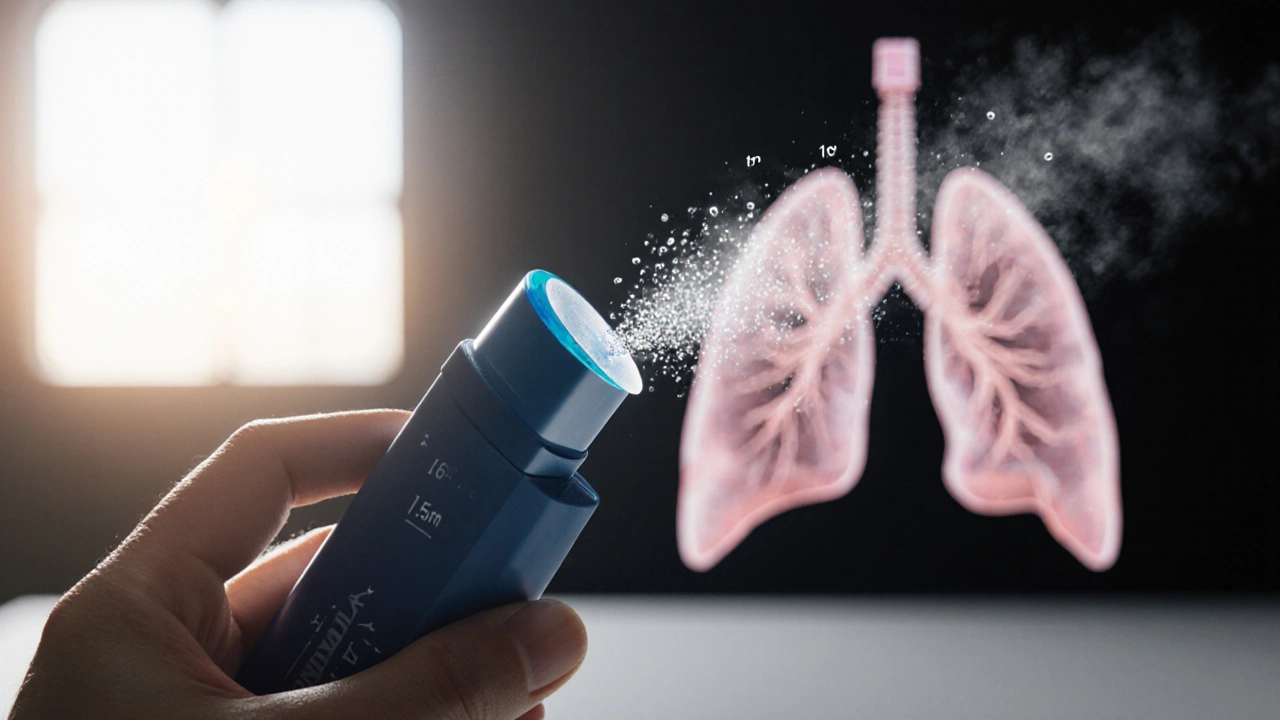Respiratory Health: Simple Ways to Breathe Easier and Manage Asthma
Feeling short of breath or coughing more than usual? You’re not alone. Millions of people struggle with wheezing, chest tightness, or the constant worry that an asthma flare‑up could strike at any moment. The good news is that most breathing problems have practical fixes you can start today. From cleaning the air you breathe to picking the right inhaler, a few smart moves can keep your lungs happy and your life uninterrupted.
Understanding Your Lungs and Common Triggers
Every breath you take passes through tiny airways that can easily become irritated. Common irritants include pollen, pet dander, tobacco smoke, and even strong cleaning chemicals. When these particles hit the airways, the lining swells, producing mucus and tightening the muscles around them. That’s why you feel the classic asthma symptoms – wheeze, chest tightness, and shortness of breath. Identifying what sets off your symptoms is the first step. Keep a simple diary for a week: note the time of day, where you were, and what you were doing when you felt a flare. Patterns pop up fast, and once you know the culprits, you can start avoiding or controlling them.
Choosing the Right Inhaler: Ventolin vs Levalbuterol
If you’ve ever stared at a shelf of inhalers and wondered which one to grab, you’re in the right place. Ventolin (albuterol) and Levalbuterol are both short‑acting bronchodilators, meaning they relax airway muscles within minutes. The big difference lies in how your body processes them. Ventolin is a racemic mixture – it contains two mirror‑image forms, one that works and one that’s mostly inactive. Levalbuterol is the pure “active” form, so you get a cleaner signal to the lungs with potentially fewer side‑effects like jitteriness or fast heartbeats.
Real‑world data from 2024 shows that most patients feel the same relief with either drug, but a small group—especially those who are sensitive to heart‑rate spikes—report feeling calmer on Levalbuterol. If you’ve noticed a racing heart after using Ventolin, switching to Levalbuterol might make a noticeable difference. Dosage is similar: typically two puffs every 4‑6 hours as needed, but always follow your doctor’s exact instructions.
Beyond the two popular choices, there are newer options on the horizon. Ultra‑long‑acting inhalers like fluticasone‑salmeterol combine daily control with quick relief, and smart inhalers with Bluetooth trackers can remind you when it’s time for a dose. For 2025, keep an eye on combination inhalers that pair a steroid with a rapid bronchodilator—these aim to cut down the number of devices you need to carry.
Bottom line: if you’re comfortable with Ventolin and don’t experience side‑effects, you probably don’t need to switch. If you feel shaky, have a fast pulse, or simply want a gentler option, ask your clinician about Levalbuterol. They’ll help you weigh the cost, insurance coverage, and any personal health factors.
Other practical steps can boost whatever inhaler you use. Practice a slow, diaphragmatic breathing technique: inhale through the nose for four counts, hold for one, then exhale through pursed lips for six counts. This simple routine can reduce airway resistance and give you more control during a flare.
Finally, remember that breathing problems can get worse without warning. If you notice increasing use of your rescue inhaler, nighttime awakenings due to cough, or a sudden drop in peak‑flow readings, schedule a check‑up. Early adjustment of your treatment plan can prevent a severe attack and keep you active.

Air Pollution and Asthma: Proven Strategies to Reduce Exposure and Improve Breathing
Air pollution worsens asthma symptoms and triggers attacks. Learn proven, science-backed strategies to reduce exposure-from using HEPA filters and checking the Air Quality Index to supporting policy changes that clean the air we breathe.
Categories: Respiratory Health
1

Pneumonia Types: Bacterial, Viral, and Fungal Lung Infections Explained
Learn the key differences between bacterial, viral, and fungal pneumonia - from symptoms and causes to treatments and prevention. Knowing the type can save your life and reduce unnecessary antibiotic use.
Categories: Respiratory Health
5

Foracort Inhaler (Formoterol/Budesonide) vs. Top Alternatives - Detailed Comparison
Compare Foracort inhaler (Formoterol/Budesonide) with top alternatives, see pros, cons, costs, and a guide to choose the best asthma inhaler.
Categories: Respiratory Health
6

Tiova Inhaler vs Alternatives: Which Tiotropium Choice Wins?
A side‑by‑side look at Tiova inhaler versus other tiotropium options, covering device type, efficacy, cost, and how to pick the best fit for COPD or asthma.
Categories: Respiratory Health
12

Ventolin vs Levalbuterol: Pharmacodynamic Insights, Effectiveness & Alternatives for Asthma Relief (2025 Guide)
If you’re wondering whether Ventolin or Levalbuterol is better for asthma relief, this guide compares their pharmacodynamic action, who benefits most, and what real-world data says. Learn how each medication works in your body, when to prefer one over the other, and practical tips every patient and clinician should consider. We’ll even look at alternatives and new developments for 2025. This deep dive doesn’t just explain which inhaler does what—it helps you make smarter choices for asthma management, with the facts that actually matter.
Categories: Respiratory Health
11
